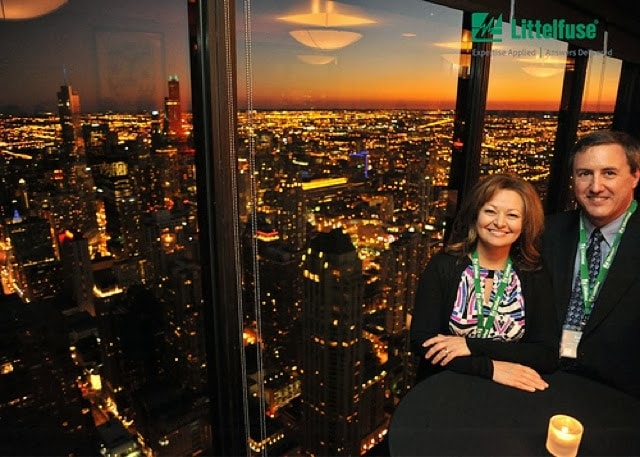Challenges Faced by Photographers (Part 3)
In the last two blog posts, I ranted about what I view as the greatest challenges facing both professional event photographers and photo production companies. To recap:
1) Smart phone cameras
2) Photo booths.
So, what is the event photographer to do? Eat a gun? Cry? Buy a photo booth? Buy stock in Apple?
The challenge is one of education. The average person — including your client — has no idea what the difference is between a cell phone photo and something done by a professional. We, as photographers, should know. We should be able to point to our work and say, “SEE! SEE HOW MUCH BETTER WE ARE.” But in some cases, we can’t.
And that’s not helped by DSLR manufacturers who have concentrated on turning your DSLR into a camcorder for video instead of a social engine upload machine. The result: a double whammy for videographers. Now, every photographer thinks they can use their Nikon D800 to capture video as well as a videographer. Suddenly, we’re trying to horn into video. It’s kinda mind blowing.
So, what to do?
This shouldn’t be that hard, in the short term. First, get through your thick skull that you need to shoot clean, so that the photos are ready to post or publish AT CAPTURE. Break away from fixing your errors in post production. Don’t make the errors to begin with.
(Two things that will help you dramatically in this: 1) set your color temperature with every shoot / environment and 2) get your flash off TTL, bounce it, and use it on manual.)
There are two major mistakes photographers make when taking pictures: lighting and color balance. Really, that’s it. Granted, you might need to crop something, but usually if you fix your lighting and color balance, the images will be ready to go.
(An addition: use your delete button. If a pic sucks, delete it in camera and take another, making adjustments. It ain’t lookin’ any prettier later. Like a one night stand, it’s never better in the morning.)
First, I need to show you what is a good picture, vs a sucky picture. Sometimes, even professional photographers have settled for sucky. They’ve decided in their heads, “that’s just the way it is.”
A perfect example is the red carpet. Last week, I tweeted a sucky photo from a red carpet, and one of my great Twitter followers (and a reader of this blog) questioned, “what is to be done? Mike, that’s from behind a rope, with flash, what else could you do?”
And while I respect this photographer tremendously, I launched a challenge at him, asking if he was settling for average. I think if we settle for average, then our cliet settles for average. Then, it’s not a leap to the cell phone photo, and we, as professional photographers, beome obsolete.
Here’s the photo:
I did not take this! What’s wrong with it? Well, first — see that drop shadow behind their heads? That’s caused by a direct flash — a flash aimed right at the subjects. The same kind of flash found on your iPhone, by the way. Second, there is no interaction, at all, between the celebrity and the participant. Now, I grant you, it may not have been possible — but still — this looks like they are posing by the men’s room. And, shoot me if I ever use blue pipe and drape. Again, perhaps beyond our control, but make an effort. Here’s a red carpet photo taken by me:

Now, I used on camera flash, too. But the flash is bounced, and manually controlled. So, no “flash face” and no drop shadow. Second, all I had to say was, “Now, you know she’s your biggest fan, Mr. Johnson.” And this was the result. You don’t get this with a cell phone. Impossible. Ha! You say, you had control here (and I did). But isn’t part of photographing a red carpet taking control? Do you think in the first photo they weren’t posing directly for a photographer?
What makes a photo? Lighting, color, and subject. If you don’t have the equipment or skill to manage the lighting, then you’re screwed.
Color balance is the next thing most people want to correct in Photoshop. Here’s an example of a cell phone photo with crappy color balance:
Yes, that’s a selfie of Matthew and I at the Trevi Fountain in Rome. DO YOU SEE HOW YELLOW WE ARE? It looks like we need to get tested for jaundis. That’s what happens when an auto camera is on auto white balance at night, in a city, with mixed lighting. Our skin should look skin colored. The marble foutain should look marble-y colored.
Now, do I have a problem sticking this on Facebook? No! Should it be used on a professional travel blog? Probably not.
Here’s a night photo with the right color balance:
Also at night, in this case the city of Chicago. I like the warm color tone, some may argue it’s a little too warm, whatever. I, as the photographer, made the choice for the warm tone. My point is, I made the choice. Not the camera. And, by the way — notice the lack of flash in the window? I was using TWO on camera flashes — but bounced from the ceiling and both set to “M” (that’s MANUAL!). The result is, I had complete control over the flash. If I wanted more, I turned it up. If less, I turned it down. Result: no flashy face. With a smart phone (or a flash set to TTL) you’d get flash in the window, the city completely black, and flashy faced subjects. Iphone, point and shoot cameras are great until you are in a tricky situation. Then they blow.
So, my argument is this:
Educate yourself and your client about what makes a great photo. Show them. Tell them. Know your business well enough to be able to produce. And think of your competition as the iPhone in their pocket, and not the other photographer ranked next to you on Google (me).
By getting color and lighting right, in the camera, at moment of capture, you can immediately upload photos for your client. Still not as easy as a cell phone, it can be done. And that means your client can (and will) post your photos INSTEAD of their nasty iPhone pictures. More important, perhaps, they’ll see why they need you.
By the way, I said “this shouldn’t be that hard in the short term” at the beginning of this post. Why did I say “the short term”? Because, in the long term, smart phone cameras will continue to improve. That means, it will be harder and harder to tell the difference between an average professional photo and an iPhone image.
Here’s a shot I took in Rome that, just two years ago, would not have been possible with a cell phone:
This was hand held on my iPhone at night. You’d never know it was an iPhone pic, and not a DSLR on a tripod. At least, not without staring at it for several minutes — it could be a tiny bit sharper! Now, an iPhone even has an HDR function, for God’s sake. Just two years ago, HDR, or high dynamic range, didn’t exist on a professional DSLR camera, let alone a cell phone. To get an HDR image, you had to take several exposures of the same scene and sandwich them together in Photoshop. The result: unique images that show detail in shadows and in highlighted areas. Now, an iPhone will do it. Though I grant you: not that well. Yet.
Oh, by the way: photographers could charge big bucks for an HDR photo, partly because it remained the realm and skill of the professional. Buh-bye cash crop!
My rant willl continue.





